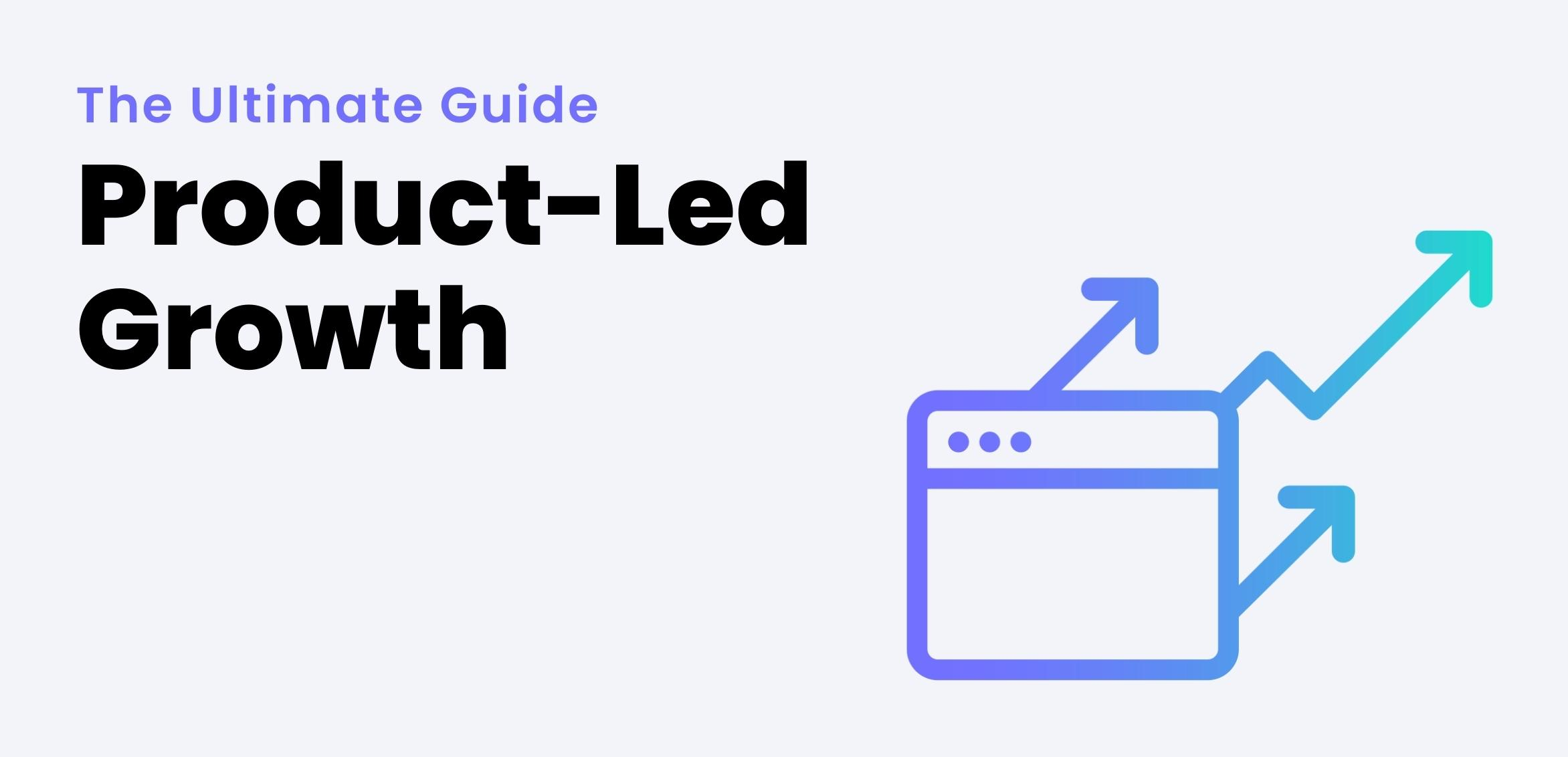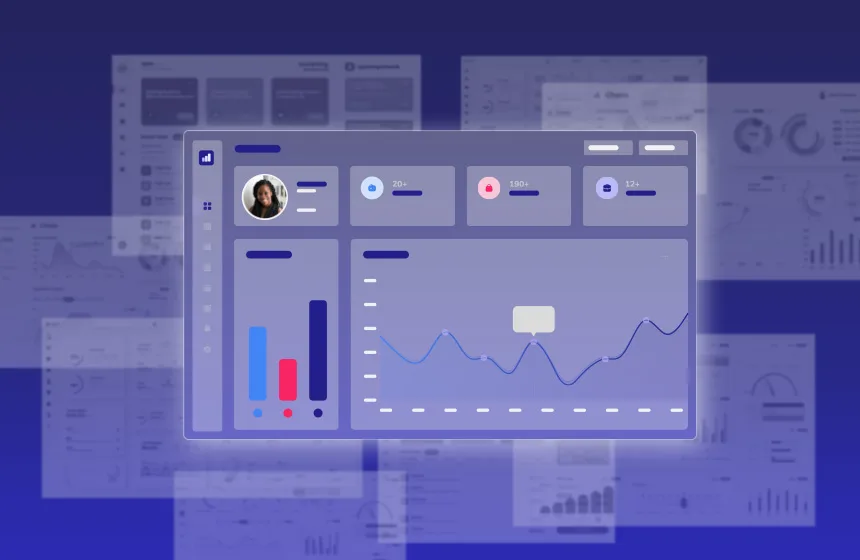Accelerate deals and increase win rates with the leading enterprise AI demo platform.
The Ultimate Guide to Product-Led Growth (PLG)

April 22, 2025
Table of Contents
Welcome, I’m so glad you’re here. Since this is The Ultimate Guide to Product-Led Growth (PLG), odds are good you stopped by for one of the following reasons.
- You have absolutely no idea what PLG is and need a clear explanation.
- You know what PLG is but not how your company can achieve it.
- You believe your company has a PLG strategy in place but want to make sure you haven’t missed anything.
If you found this guide because of reason number one, know that you’re not alone. We’re all barraged with so many buzzwords on a daily basis that sometimes we have to look one or two of them up later.
That said, there’s a good reason why the term product-led or PLG caught your attention.
Why Learning About PLG is Worth Your Time
PLG is currently dominating B2B software as a Service (SaaS) conversations because it’s proven to work extremely well and extremely fast. Companies that have committed to a PLG motion are seeing significantly higher revenues as a result of;
- Shorter sales cycles
- Larger Return on Investments (ROI)
- Decreased Customer Acquisition Costs (CAC)
Not convinced? Venture capital firm Openview looked at the financials of 21 public SaaS companies, all of whom had adopted a product-led approach. The median 2020 revenues of these product-led companies were $884M, compared to the $443M in median revenues that SaaS companies experienced overall.
You’re not here to learn about PLG because it might work. You’re here to learn about PLG because it’s already working.
So let’s get to it! This guide will break down the following:
The Meaning of Product-Led Growth
How Product-Led Growth Came to B2B
From Freemium to Full PLG
Why B2B Tech Buyers Need You to Be Product-Led
PLG First Steps
Optimize Your Existing PLG Strategy
Keep on Keeping On With PLG
The Meaning of Product-Led Growth
If a company is product-led, its product is their primary means of customer acquisition. Simply put, they sell their product with their product. Product-Led Growth (or PLG) happens when product-led strategies are well executed. A company becomes product-led and then sees PLG as a result.
Some companies achieve PLG by becoming product-led in areas that will generate the most immediate impact, like sales and/or marketing. Other companies launch a comprehensive strategy that puts their product front-and-center at every customer touchpoint—it’s omnipresent in their funnel. Here at Reprise, we call this full-funnel PLG.
Both methods are considered product-led, and neither is the “right” way. It’s more about what works for you as a company. Is your organization ready to take a transformative, full-funnel product-led approach, or is it more realistic to begin in an area that will produce the highest return and scale from there? That’s your call to make.
How Product-Led Growth Came to B2B
The concept of PLG has been around for a long time. There’s a good chance your grandparents (or great grandparents) bought a Hoover vacuum after watching a door-to-door salesperson throw a pocketful of dirt on the carpet and then vacuum it up. Seeing the product, sold the product.
Initially, PLG was used by companies that sold tangible goods to consumers (B2C) in both retail and direct-to-consumer sales environments. You sampled the food at the grocery store; you bought the food. You ordered 100 cassette tapes for a penny; you used your allowance to pay for the ones that arrived every month afterward.
PLG was a relatively inexpensive, highly-effective sales model that consistently produced revenues for B2C companies. B2B software companies didn’t start adopting PLG until about the mid to late 1990s when limited trial versions, called Freemiums, entered the market—and even then, it was just a handful.
From Freemium to Full PLG
Until recently, the only software companies that could fully adopt a top-of-funnel, product-led growth model were those capable of offering Freemiums. Zoom, Dropbox, Slack, and Canva are a few great examples.
Software companies that couldn’t provide Freemiums (because their product or technical integration requirements was too complex) struggled to achieve PLG. Unable to adopt a full-funnel product-led approach, these companies relied heavily on sales and marketing to build a narrative that would capture prospects’ attention.
Eventually, their prospects got to see, and maybe interact, with a customized version of their software—but not at the top of the funnel. The prospect usually wouldn’t get to see the product in action until the evaluation stage and would often have to wait for a second call with Sales to get a feel of what the product could do. Creating a custom product experience was too time-consuming and expensive for companies like these to deliver to early-stage buyers.
Until now.
Companies like Reprise have expanded the PLG toolbox, creating multiple ways for potential buyers to have an up-front product experience—regardless of the software’s complexity or connectivity requirements.
Reprise has also made it possible for team members to build shareable product experiences without coding experience. Removing these technical and financial barriers has democratized PLG and made it possible for every software company to become product-led.
The TLDR:
When you become product-led, you achieve PLG.
PLG strategies now include (a lot) more than just freemiums.
Organizations with complex product offerings can achieve PLG.
Code-free product experience tools like Reprise have made PLG accessible for all companies.
As PLG gains a larger foothold, you’ll begin to see strategic PLG initiatives called out by their respective departments. Accompanying titles might include:
|
Why B2B Tech Buyers Need You to Be Product-Led
Your B2B buyers have been enjoying product-led experiences in their personal lives and want the same thing in their professional ones. We are in the era of the end-user, and there is zero tolerance for digital inconvenience.
Imagine that you’ve been regularly ordering lunch on the free Postmates app, and are now considering purchasing the unlimited version for $9.99 a month. You had the opportunity to experience Postmate’s interface, decided it was easier to use than its competitors, and are now willing to make a financial commitment.
You weren’t contacted by a Postmates sales representative and you definitely didn’t have to sit through a PowerPoint deck that explained the benefits and cost savings of signing up for the unlimited delivery subscription. You tried it, you liked it, and you progressed to the next stage in your buyer journey.
This is the experience your B2B buyers want. They don’t want to be asked to give up this frictionless purchasing experience just because the lunch hour’s over. Buyers want to experience your product without feeling aggressively pitched to before doing so.
Forrester confirmed that most B2B buyers want to enjoy a self-led purchasing experience during a deep dive into buyer behavior. Of those surveyed:
- 60% would rather not interact with a sales representative at all.
- 68% want to do their own product research.
- 62% say they can determine who they want to work with based solely on their digital content.
Becoming product-led means acknowledging that your B2B buyers want less of you and more of your product. They trust themselves to identify when they’re ready to progress from a prospect to a buyer, and your job is to make that transition as appealing and easy as possible.
PLG First Steps
Once you’ve made the decision to adopt a PLG strategy there are quite a few next steps to take. But we’re still learning, so instead of getting bogged down, let’s look at what the 3 most important ones are.
#1 Fully commit to being product-led
You can begin your PLG strategy in one area of your company, like sales or marketing, and scale up from there. But what you can’t do is sometimes have a PLG approach and sometimes not.
For example, if you’re committing to beginning your PLG journey with a product-led sales team, then sales should strive to be consistently product-led. They can’t offer a custom product demo at one encounter and then not be available at the next. Otherwise, it feels like a bait-and-switch to prospects.
#2 Reexamine buyer touchpoints
After committing to becoming product-led, you should take inventory of all the areas where your company intersects with potential buyers, from cold call scripts to website content. This exercise will help you identify where you can begin offering product experiences.
Once you’ve decided where you’re going to share your product, It’s essential to make the process as frictionless as possible. If a buyer has to sit through a sales presentation before gaining access to a trial version or demo, they’ll know you’re just paying lip service to being product-led.
#3 Don’t join the party too soon
When adopting a PLG approach, it’s important to redefine what the catalysts for prospect engagement are. Your buyer needs space to explore your product before sales outreach happens and the lead qualification guidelines you previously had in place—such as MQLs—may not synch up with a product-led model.
Instead of having Sales jump into a buyer’s journey too soon, identify which usage patterns will act as lead qualification triggers. Will it be once they’ve viewed your demo a certain number of times or after they’ve logged in to your free trial for consecutive days? Is it after they performed a certain action inside your product?
The end result of this process is that you’ll have what’s referred to as Product Qualified Leads (or PQLs). PQLs are leads who have had the opportunity to experience your product’s value for themselves before being approached by sales outreach.
When Sales engage with PQLs, they should do so with messaging that aligns with their product experience to date.
For example, let’s say that your sales team has decided to engage with users that have created a custom analytics report. Moving in with a pitch that focuses only on how great the product is will feel redundant. Your users already know it’s great, and that’s why they’re actively sharing it.
Engaging with a PQL means that sales get to skip a few stops during outreach, bypassing initial persuasion and moving immediately into a mid-funnel level discussion about the next steps even though it may be the first contact. The first interaction can be used to discover more about the prospect’s identified needs instead of general pain points. For example, “I saw that you created a custom analytics report—can you explain what problem you were trying to solve?”
Optimize Your Existing PLG Strategy
In order to fully realize all of that PLG has to offer, you’ll eventually need to consider how your entire organization can become product-led, not just sales and marketing.
Below, are 3 strategies that can help get you there when you’re ready.
#1 Leverage customer success insights
Because your customer success team is perceived as a neutral resource, existing customers are more likely to share what they like or don’t like about your software without fearing the conversation will turn into a sales pitch.
Customer success insights are most often used by product development to make the end user’s product experience more intuitive. But they can also be used to generate static PLG content, like prerecorded product tours. Learn which software features your existing customers appreciate most, then use that knowledge to create guided product experiences.
#2 Accelerate product engineering
The usage data that you collect during things like interactive product demos and free trials can provide valuable feedback for your product engineering teams.
Examine where (and why) first-time end-user interest ramps up or declines during the user’s initial product experience. Then feed that information to your engineering team so they can make product modifications that will increase your product’s Time-to-Value (TTV).
#3 Engage early product champions
Fantastic products inevitably generate product champions. Loyal, unpaid cheerleaders that tout how impressive your software is to their peers. Guess what? The sooner you introduce your product to buyers, the sooner these champions appear.
Identify early enthusiasts and then incentivize them to keep advocating for your software. If they’re using a Freemium, unlock features exclusively for super users or buy lunch in exchange for product feedback. Help these early champions get the word out and improve the way future prospects experience your product.
The TLDR:
Today’s buyers require a product-led approach.
Take the first steps towards achieving PLG and then scale your strategy.
PLG can deliver company-wide benefits.
Keep on Keeping On With PLG
Thank you for reading the Ultimate Guide to PLG! I hope you’ve learned more about what PLG is and why it’s become such a hot topic.
If you’re new to creating a PLG journey for your company, please be encouraged that you are on the right track. A product-centric, go-to-market strategy is no longer just a novel concept; it’s an imperative one. So taking the time to learn exactly what PLG is and how it works is a great starting point. That said, don’t feel like you need to know everything to initiate a PLG motion within your organization.
Launch PLG initiatives within a single team, like sales or marketing, and scale up from there. Or go even more micro and adopt a product-led strategy within just one of your team’s processes. But take those first steps, so you don’t get left behind!
If you’re interested in continuing on with your PLG research (and I hope you are), check out some of the conversations we’re having with other industry leaders about product-led growth.






